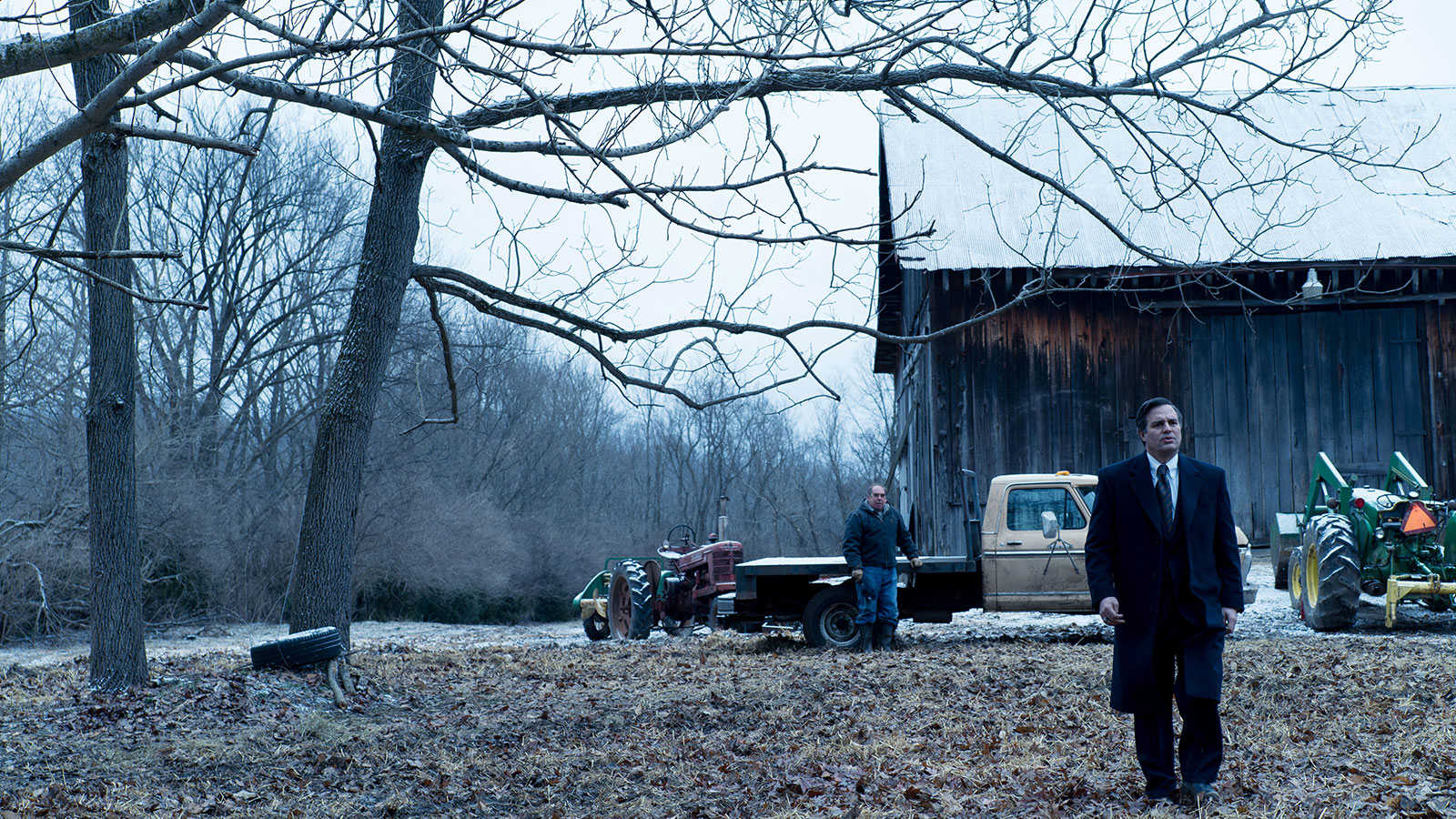About a third of the way into the film Dark Waters, Rob Bilott, played by Mark Ruffalo, is lying in bed with his eyes open, looking anxious. The lawyer has spent the past year poring over thousands of internal documents from the DuPont chemical company, and has pieced together a harrowing story. The company has been dumping a chemical called “C8” into the air and water outside of its plant in Parkersburg, West Virginia, for decades, and withholding information about the dangers it posed to human health.
Bilott gets out of bed, boots up a boxy PC from the early 2000s, and opens a blank document. He hesitates for a moment — he’s about to do something unprecedented in his corporate law firm — then begins typing a letter to the Environmental Protection Agency outlining everything he’s gathered about DuPont’s cover-up.
That letter became known as “Rob’s Famous Letter” among Bilott’s colleagues, as Nathaniel Rich reported in the New York Times Magazine article that inspired the film. If Bilott had never sent it, the world might still be blind to the dangers of C8 and other per- and polyfluoroalkyl substances known collectively as PFAS — a class of nearly 5,000 substances called “forever chemicals” because of how long they persist. The nickname is hardly an exaggeration. Some of them, like C8, literally never break down in the environment.
So what do companies like DuPont use them for? PFAS are great for repelling water and fats, which makes them a miracle coating in a range of products, like non-stick pans, waterproof clothing, and food packaging. The chemicals have only been manufactured since the 1940s, when 3M first licensed them, but in their short tenure on earth, they have spread to every corner of the planet and made their way into the blood of 99 percent of all human beings. Scientists have found a probable link between C8 exposure and high cholesterol, ulcerative colitis, thyroid disease, testicular cancer, kidney cancer, and pregnancy-induced hypertension.
Dark Waters chronicles the true story of Bilott’s nearly 20-year battle to hold DuPont accountable. In the end, the story is triumphant: Bilott exposes the company’s cover-up, wins a class-action lawsuit, orchestrates the first major epidemiological study that links C8 to several diseases and cancers, and makes DuPont pay hundreds of millions of dollars to its victims and their families. The film offers a much-needed dose of hope that there are people out there fighting for a more safe, just, and honest world … and winning! But viewers should know that the battle is far from over. The story told in Dark Waters is really just the first chapter in a public health nightmare that’s continuing to play out all over the country.
‘Forever chemicals’ are everywhere
By one measure, PFAS are present in the tap water of 19 million Americans across 43 states. They’re found in particularly high levels near military bases and airports where PFAS firefighting foam is used. C8 is no longer produced in the U.S., but companies have simply moved on to manufacturing other PFAS chemicals instead. Companies are not required to prove a chemical is safe before selling it, so there’s not enough research yet to know what the risks of exposure are. Two federal health agencies are spending $7 million to try to learn more, and early studies don’t look good.
In 2005, thanks to Bilott’s exposé, the EPA fined DuPont more than $16 million, the largest administrative penalty the agency had ever imposed. But it hasn’t done much to regulate PFAS in the 15 years since. The EPA is still considering whether to set a safe drinking water standard for PFAS or require companies to report how much they release into the environment. Its only formal policy is a voluntary advisory level for contamination of drinking water — which is really just a suggestion, and one that critics say is far too lax.
States are taking matters into their own hands (and wallets)
Some states, like Ohio and Pennsylvania, are investing in extensive testing for PFAS in their water supplies. Others, like New Jersey, New York, and Michigan, are spending millions on cleanup efforts and trying to enact their own drinking water standards that are much stricter than the EPA’s advisory level.
Earlier this year, New Hampshire passed strict standards on its drinking water and became the first state to require water utilities to test for and treat PFAS. But that decision is getting challenged in court. 3M, which has a paper plant in the state and would be forced to install costly water treatment systems, is fighting back, arguing that no peer-reviewed science was provided to justify the standards. The presiding judge has issued an injunction on the new law. It’s just one example of how the companies who created this mess are still fighting regulations and denying accountability, despite settling thousands of lawsuits for contaminating people’s drinking water.
Good, old-fashioned lawsuits
Several states, including New Hampshire, are turning to Bilott’s tried-and-true method of suing PFAS manufacturers. More than 100 lawsuits seeking damages for PFAS contamination from firefighting foam have been filed by individuals, cities, states, and water utilities. Many of the suits have been consolidated to go to trial before a federal judge in South Carolina.
Bilott is also still fighting. In 2018, he filed another class-action lawsuit against eight chemical companies, this time on behalf of everyone in the U.S. who has PFAS in their blood … so, everyone. This latest suit is not about money. Instead, Bilott wants the companies to pay for an independent science panel to study the health effects of the entire family of PFAS chemicals. The uncertainty around what these chemicals do to the body has given companies license to just keep producing new ones and allege that they are safer. The book on PFAS was first opened by Bilott, and by establishing the science on them once and for all, he may yet be the one to help close it.



